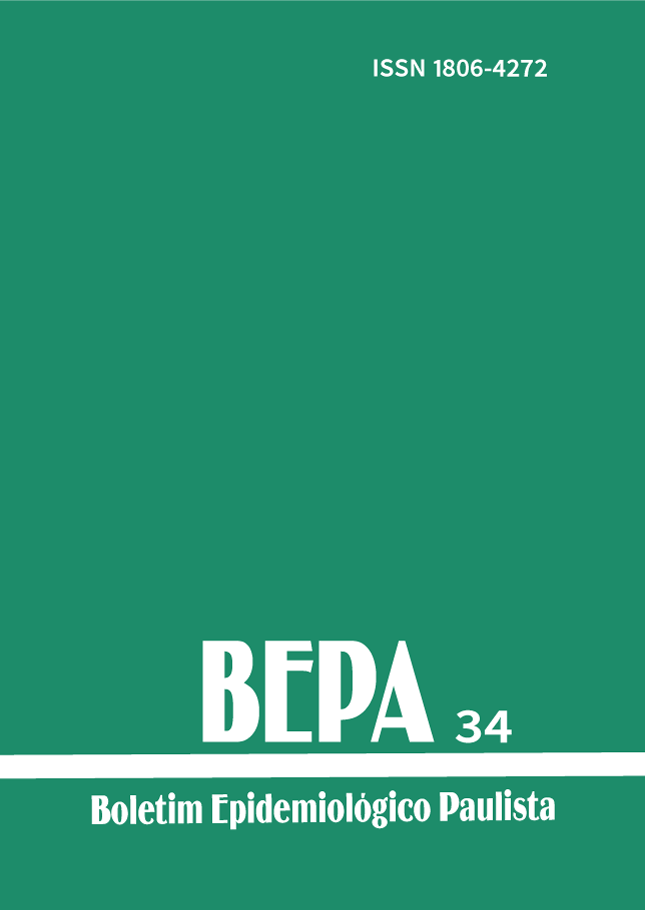Abstract
Dengue, Visceral Leishmaniasis (VL) and the proliferation of scorpions are related to the environment of urban areas that demand intervention of the local population in order to achieve an adjusted domiciliary sanitation. We selected eight cities of the Region of Presidente Prudente for implantation of the proposal of integrated domiciliary visit with emphasis in environmental handling, previously collecting information on the sanitary conditions of the houses allowing their classification according to levels of risk for occurrence of the vectors of dengue, VL and of scorpion. 48,155 houses were visited for the initial diagnosis and 2,852 (5.92%) protocols were elaborated, in critical houses, in which the necessary recommendations were presented to the dwellers. In the five cities that had carried through comparison of the classification, reduction was verified in the risk between first and second visit for the presence of Aedes aegypti, scorpion and Lutzomyia longipalpis. The results obtained showed that the proposal is feasible, due to the good results obtained from the established recommendations, in small and medium cities, that constitute the majority of those located in the Region. It is important to emphasize the compromise of municipal leaderships in the process, from the organization of the collection of the resulting residues and their environmentally correct handling to the resolution of problems that result from vacant lots and uninhabited houses and the role of the public administration, represented by Sucen, offering aid for the assessment, and the evaluation of actions, contributing to integrated efforts for the implementation of public politics according to the epidemiological situation of vector transmitted diseases and the control of harmful animals.
References
Governo do Estado de São Paulo. Secretaria de Estado da Saúde. Superintendência de Controle de Endemias (Sucen). Manual de Vigilância Entomológica de Aedes aegypti. São Paulo;1997.
Camargo-Neves VLF, Glasser CM, Cruz LL, Almeida RG. Manual de Vigilância e Controle da Leishmaniose Visceral Americana do Estado de São Paulo. São Paulo: Secretaria de Estado da Saúde; 2006;145p.
Camargo-Neves VLF. A Leishmaniose Visceral Americana no Estado de São Paulo: situação atual. Boletim Epidemiológico Paulista-Bepa. ano 1, número 6. 2004.
Teixeira CF, Pinto LL, Vilasboas AL. O processo de trabalho da Vigilância da Saúde. Anvisa Agosto. 2002. mimeo.
Governo do Estado de São Paulo. Secretaria de Estado da Saúde. Superintendência de Controle de Endemias (Sucen). Normas e Recomendações Técnicas para Vigilância e Controle do Aedes aegypti no Estado de São Paulo. São Paulo; 2002.
Governo do Estado de São Paulo. Secretaria de Estado da Saúde. Superintendência de Controle de Endemias (Sucen). Manual de diretrizes para atividades de controle de escorpiões. São Paulo,1994.
Siegel S Estatística não paramétrica para ciências do comportamento, Bookman Cia. Ed. 1975.

This work is licensed under a Creative Commons Attribution 4.0 International License.
Copyright (c) 2006 Susy Mary Perpetuo Sampaio, Edna Ruiz Teixeira, Ivete da Rocha Anjolete, Ligia Maria A.O. Sinatura, Elizete Rodrigues Gabriel, Cristiane Tami Onezuka, Dalva Marli Valério Wanderley
